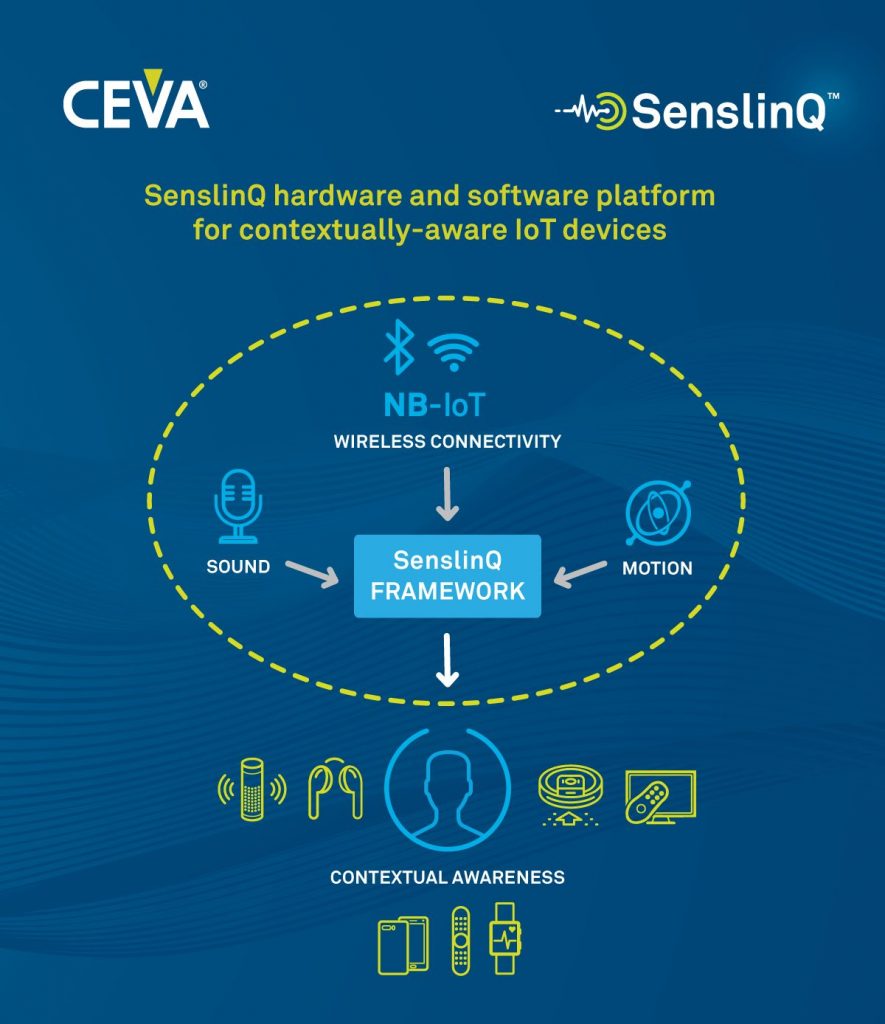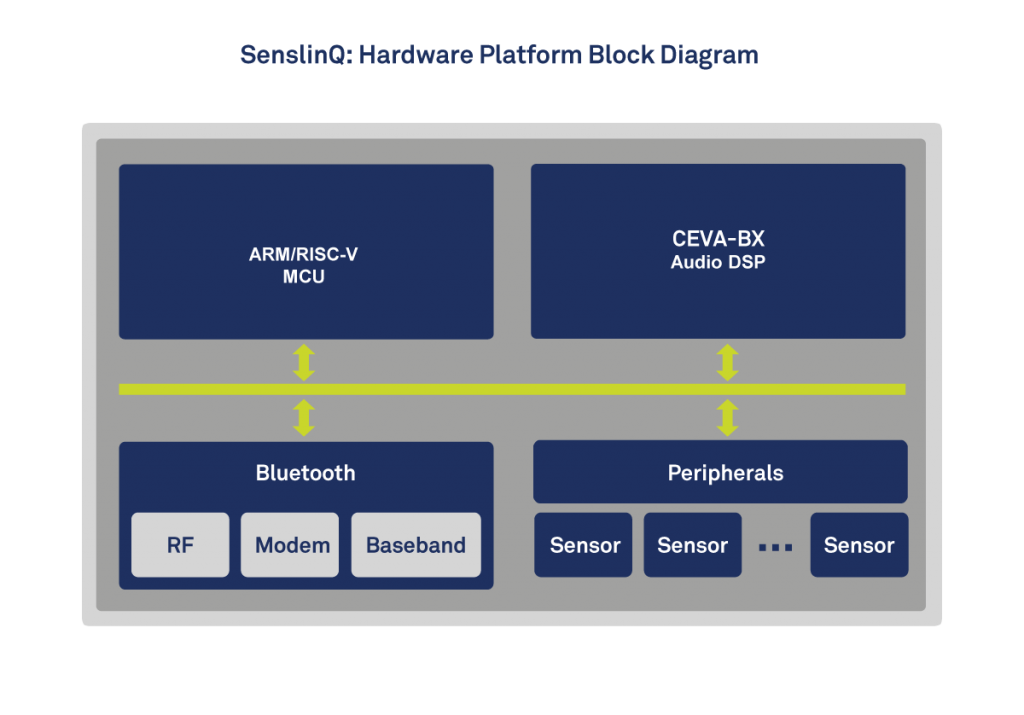Hardware and Software Platform for Contextually Aware IoT Devices
SenslinQ™ is a unique hardware and software platform for linking various sensor processing elements and present them to the Host processor OS or user application.
The SenslinQ audio framework aggregates Sensor Fusion, Voice and Connectivity technologies to enable contextually aware IoT devices.
By simplifying algorithm connectivity, SenslinQ enables context aware software modules from CEVA or 3rd parties to be activated through the SenslinQ audio framework running on a Host CPU.
The SenslinQ audio framework is a Linux-based Hardware Abstraction Layer (HAL) reference code and APIs for data and control exchange between the multiple processors and the various sensors, and allows the Host CPU to activate multiple cores to get processed data for use by the user application.

Benefits
Integrated hardware and software platform that aggregates sensing technologies to enable contextually aware IoT devices
Main Features
- SenslinQ offers a customizable hardware architecture that is composed of three pillars connected using standard system busses and interfaces:
- ARM or RISC-V MCU
- CEVA-BX DSP
- Wireless Connectivity Island, such as RivieraWaves Bluetooth, Wi-Fi or Dragonfly NB-IoT platforms
- The SenslinQ software is comprised of a large portfolio of ready-to-use software libraries from CEVA and its ecosystem partners, which includes:
- Hillcrest Labs MotionEngine software packages for sensor fusion and activity classification in mobile, wearables, hearables, robots and more
- ClearVox front-end voice processing, WhisPro speech recognition, and comprehensive DSP and AI libraries
- Extensive 3rd party software components for Active Noise Cancellation (ANC), sound sensing, 3D audio and more
- Using the SenslinQ audio framework, a customer application can seamlessly activate and receive indications from the MCU running sensor fusion tasks, or the CEVA-BX DSP running sound processing tasks, without prior knowledge of either processor architecture or SenslinQ libraries
Block Diagrams



